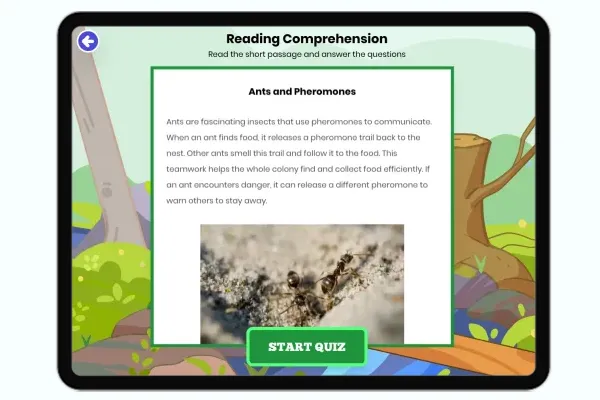Turtle Sense of Hearing — Reading Comprehension
Grades
- 1
- 2
- 3
Standards
- RI.2.1
- RI.3.5
PRINT+DIGITAL RESOURCE
This learning resource is available in interactive and printable formats. The interactive worksheet can be played online and assigned to students. The Printable PDF version can be downloaded and printed for completion by hand.
About This Reader
Turtles possess a fascinating auditory system that, while different from mammals, is well-adapted to their unique lifestyles. Unlike humans, turtles lack external ears, instead having thin flaps of skin covering their internal auditory structures. This adaptation allows for streamlined movement in water while maintaining the ability to perceive sound. Turtles are particularly sensitive to low-frequency sounds, which are crucial for detecting predators and locating mates. In aquatic environments, turtles utilize their shells as a conductor for vibrations, effectively expanding their capacity to sense underwater sounds. Some sea turtle species can detect sounds from impressive distances in the ocean, aiding in navigation and communication. On land, turtles may supplement their hearing by sensing vibrations through their feet and shell. While their hearing may not be as acute as some other senses, it plays a vital role in their survival and interaction with their environment. The turtle's auditory capabilities showcase the remarkable ways in which these ancient reptiles have adapted to life in diverse habitats, from tropical seas to freshwater lakes and terrestrial environments.
Perfect For:
👩🏫 Teachers
- • Reading comprehension practice
- • Auto-graded assessments
- • Literacy skill development
👨👩👧👦 Parents
- • Reading practice at home
- • Comprehension improvement
- • Educational reading time
🏠 Homeschoolers
- • Reading curriculum support
- • Independent reading practice
- • Progress monitoring
Reading Features:
📖
Reading Passage
Engaging fiction or nonfiction text
❓
Comprehension Quiz
Auto-graded questions
📊
Instant Feedback
Immediate results and scoring
📄
Printable Version
Download for offline reading
🔊
Read Aloud
Voice-over with word highlighting






















